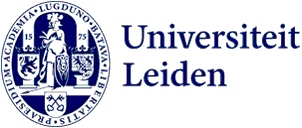
Night of Discoveries: 3D-printed paintings and the effects of psychedelics
Performances, exhibitions, workshops and inspiring talks: come to the Night of Discoveries art and science festival on 16 September and embark on a voyage of discovery. Various researchers from the university are speaking at the festival. Below are just some of them.
One of the speakers is Liselore Tissen, an external PhD candidate in art history at Leiden University and Delft University of Technology. Why, she asks, should you squeeze past a myriad of selfie sticks to get a glimpse of Vermeer’s Girl with a Pearl Earring when you could behold a Girl with a Pearl Earring at home that is indistinguishable from the original?
Tissen is researching the meaning of 3D printing in the art world. Her research focuses on conservation, material use, philosophical and ethical dilemmas and the role of art in society. She can even predict how a painting will look in the future based on the chemical composition of the paint.
But her 3D prints are also useful in the discussion on looted art. What then is the original if you can reproduce it one for one, right down to the texture and craquelure? Many people think that a 3D print is no match for the original. But that is the question, says Tissen. ‘The print comes closer to the original version by the artist than the artwork that we now see, after sometimes centuries of ageing. The print does not replace the original but it can serve it. By showing the work in the original setting, for example. An altarpiece with gold paint looks different by candlelight in the church it was once intended for than in a museum. But the original cannot hang in the church because of conservation.’
Painter Theo van Doesburg
Tissen, who previously produced works by Rembrandt and Vermeer with a 3D printer, will set to work in autumn 2023 with two paintings by the painter Theo van Doesburg, who once lived in Leiden. She will use a 3D printer to study one of Van Doesburg’s abstract compositions and a portrait of his muse, Petronnella Johanna van Moorsel.
Tissen has already reproduced a skull for another Leiden museum, Volkenkunde. This skull, probably looted from a Mexican grave in the 1950s, was purchased by the museum in 1963. The museum was unaware at the time of the skull’s provenance. Although the skull has not yet been formally claimed by Mexico, Tissen and a colleague, at the request of the museum itself, have already sought contact with the Mixtec community in Mexico.
3D print of a skull
A 3D print of the skull should help advance the discussion between Leiden and Mexico. A Mexican artist toured various Mexican schools with the print and got the pupils to draw a picture of what they thought this ancestor would have looked like.
‘That is a very different attitude from “We’re the museum and that’s the end of it”’, says Tissen. ‘Perhaps the Mixtecs want the skull back. Or they might want to ceremonially bury the print and leave the original in Leiden.’ Although the latter seems unlikely: the Mexican artist has already said that as far as he is concerned the skull should return to Mexico. The 3D print can stay in Leiden, he says.
The following researchers are also appearing at the Night of Discoveries:
Interactive workshop
In the 18th century, rhetoric was more than the ability to write well: it was the art of bringing speech to life through use of the voice, gestures and facial expressions. In this interactive workshop Jed Wentz will try out oratorical gestures using Shakespeare as a guide.
Hip-hop
Aafje de Roest conducts scientific research into contemporary Dutch hip-hop. But how do you go about studying hip-hop? And what does hip-hop teach us? De Roest and the visitors will look at a number of video clips and texts.
Scientific animation
Discover the fascinating field of scientific animation, where science and creativity come together and the astonishing microscopic world is brought to life. During the Night of Discoveries Vera Williams will explain how scientific animation opens the door to the wonderful world of microbiology.
Psychedelics
LSD and MDMA – drug or medicine? In this talk Michiel van Elk will look at neuroscientific research into psychedelics. What exactly happens in the brain under the influence of psychedelics? How do psychedelics affect our perception and emotions?
The Night of Discoveries is on Saturday 16 September and will be at the Leiden University Academy Building, the Hortus botanicus, Leiden University Library and the Old Observatory. Discover young makers, researchers and artists at various spots in the festival area. A true voyage of discovery to performances, exhibitions, debates, workshops and inspiring talks on the subject of art and science. See the full programme.
Photo: Marc de Haan
